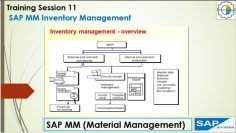This video provides an introduction to the concept of Master Data in SAP S/4HANA Sales and Distribution (SD). The speaker discusses the process in detail, providing step-by-step instructions. Here are some key points:
- Significance of Master Data: The video begins with an explanation of the importance of master data in SAP S/4HANA SD. Master data is used as a base for any transaction, whether it’s producing, transferring stock, selling, purchasing, or doing physical inventory. It saves time by allowing users to maintain the data once and use it in multiple transactions.
- Types of Master Data: The presenter discusses different types of master data in SAP SD, including customer master data (also known as business partner master data), material master data, customer material information, condition (pricing) data, and output master data.
- Master Data in Transactions: The video demonstrates how master data is used in transactions. For example, when creating a sales order, the system pulls details from the customer master data and material master data. The presenter shows how to create a sales order and how the system automatically copies data from the master data.
- Customizing Master Data: The presenter explains that while the system copies data from the master data, users can manually change the copied data in the transaction. This flexibility allows for customization based on specific transaction requirements.
- Master Data in Other SAP Modules: The video briefly mentions that there are other types of master data used in other SAP modules, such as vendor master data, purchasing info record, output condition record, work center data, bills of materials, routing, and general ledger master data used in financial transactions.



























